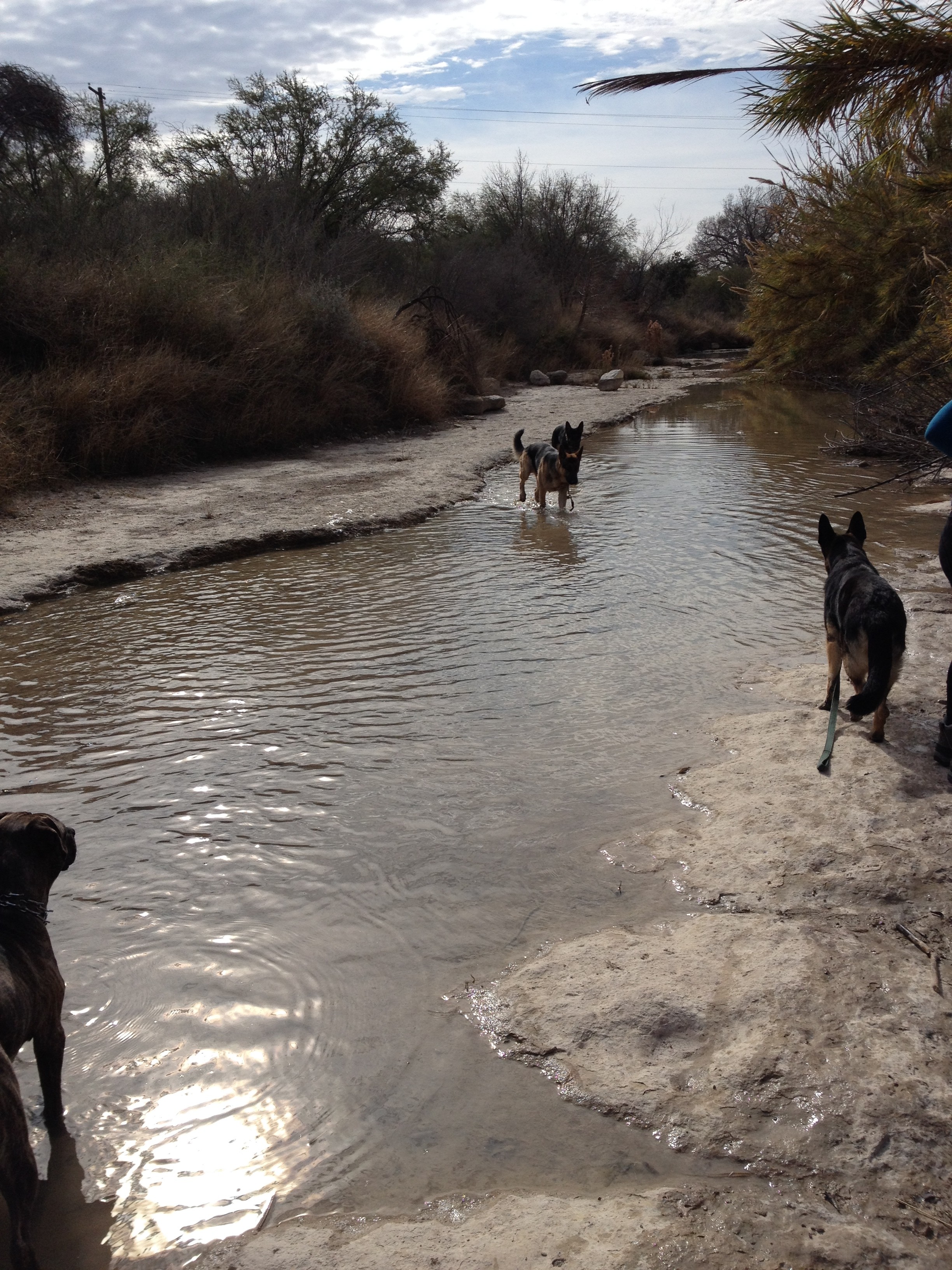Photo shows San Felipe Creek in Del Rio, Texas, home of Gambusia clarkhubbsi. The dogs, Tally, Gus, Oso, and Maya enjoyed romping in the creek.
Day five started early because it was going to be a long haul. From Marathon we would follow US 90 to Del Rio, TX past Seminole Canyon State Park, a possible home of Gambusia senilis, and Lake Amistad where G. amistadensis once lived in the now flooded Goodenough Spring. In downtown Del Rio at San Felipe Creek we would visit the habitat of G. clarkhubbsi. Then we’d sprint up US 90 to San Antonio; take I-10 to Austin where I’d drop off Cara; and then 130 miles south to home, the farm, and the hatchery.
We stopped at Seminole Canyon to observe G. senilis habitat. This species, common name Blotched Gambusia, is not considered endangered but is considered threatened by the State of Texas. This species primarily resides in Mexico but is known from the Devils River in Texas and has been reported from Seminole Canyon .
There isn’t much to see when passing Goodenough Spring. It is a hundred feet below the lake’s surface. Unlike G. georgei, there was an attempt to save G. amistadensis when Goodenough Spring was flooded by Lake Amistad. Populations were established at Dexter and The University of Texas at Austin, where both still maintained it into the 1970s. Sometime afterwards the species was extinct, apparently due to contamination and hybridization with G. affinis. Dexter staff says, “Our records indicate that fish (+50) were brought in on 11/30/1974 and once the fish had stabilized to their new environment they were screened for purity and determined that they were hybridized with [G.] affinis; the fish came in that way, they had been hybridized in the wild. The stock was removed from Dexter on 08/25/1976.” I suspect the same was true of the fish sent to Austin. This shows the danger that introduced G. affinis holds for its relatives.
After passing by the once habitat of G. amistadensis, we arrived in Del Rio. We walked along San Felipe Creek and saw a fair number of G. clarkhubbsi. We used our IPhones to take photos of the habitat and little gray fish in the water. Since we were dealing with mostly endangered species on the road trip I’d not taken even one dip net. No reason to bring along temptation. So, even though this species isn’t yet officially endangered, we had no way of getting side view photos. G. clarkhubbsi was only recently discovered despite living in the middle of a city. It was found in 1997 and described and named after Dr. Hubbs in 2003.
The rest of the return home was uneventful.
What did I learn on this trip? Two observations: First, many of these fish have very restricted and very vulnerable ranges. A single pipeline break or oil tank truck wreck (not an unusual happenstance in Texas) and a species is gone, forever. Second, with the large number of springs (some of which are now dry due to pumping) in west Texas and eastern New Mexico no telling how many unidentified species do exist or once existed. If a species such as G. clarkhubbsi could exist right in one of the oldest cities in Texas without detection, then how many others do and did exist?


Leave a Reply